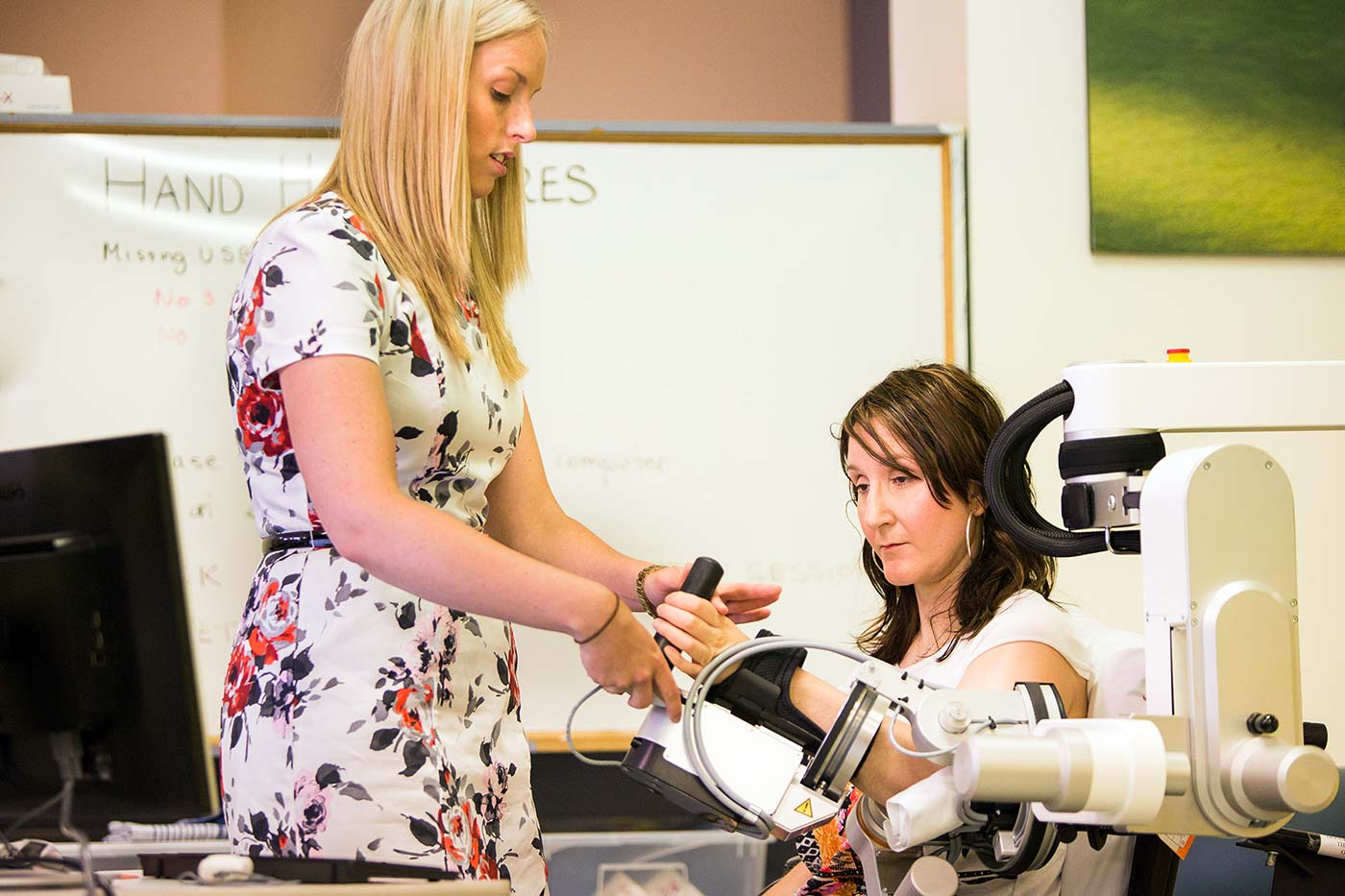A commercial collaboration with Royal Melbourne Hospital.
Combining mechanical engineering with the mechanics of human movement, researchers at the University of Melbourne are working to help restore mobility to people who have suffered a brain injury.
They work with the Royal Melbourne Hospital’s rehabilitation unit and patients suffering hemiparesis – a weakness or paralysis on one side of the body, most commonly associated with stroke. Restoring upper-body mobility and arm movements are the particular focus of the research.

PhD research student Justin Fong is a member of the robotics team at the University of Melbourne’s Department of Mechanical Engineering. His research makes use of data collected from patients to evaluate improvements in movement with the use of robotic aids. These aids include joysticks and other accessories designed for computer gaming, as well as the university’s rehabilitation robot, which is undergoing trials at the hospital.
Mr Fong says the rehabilitation robot is a powered mechanism that supports the weight of the patient’s arm. It can also recognise when a patient is exerting effort and can help complete arm movements. Mr Fong says by helping to successfully complete activities such as computer games, patients are encouraged to keep practising their movements. And the more they practice, the faster new neural pathways form around damaged part of the brain to re-establish independent movement.
The rehabilitation robot can also be used to help patients move in the correct way, he says, to prevent poor patterns that might develop to compensate for movement difficulties that often stress other parts of the body.
His own PhD project uses the data from patients using robotic aids to model their movements and determine how to promote correct movement. That way we can eliminate time and activities that are not really helping patients,
he says.
The University’s robotics team is also working with rehabilitation therapists to develop a wearable sensor for patients to keep track of whether they are undertaking recommended exercises as part of their rehabilitation program.
